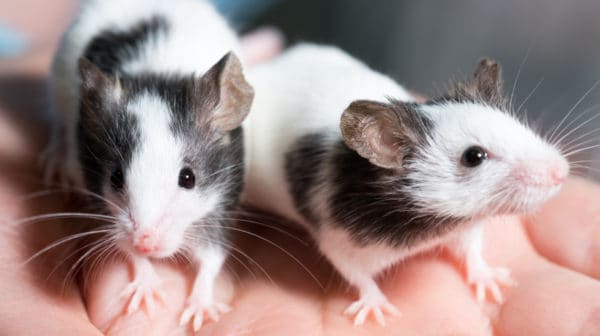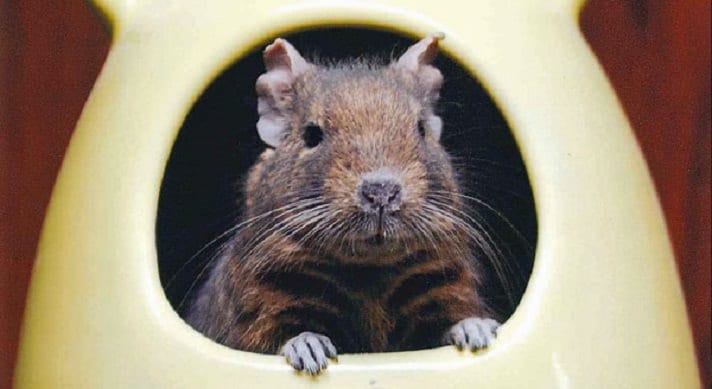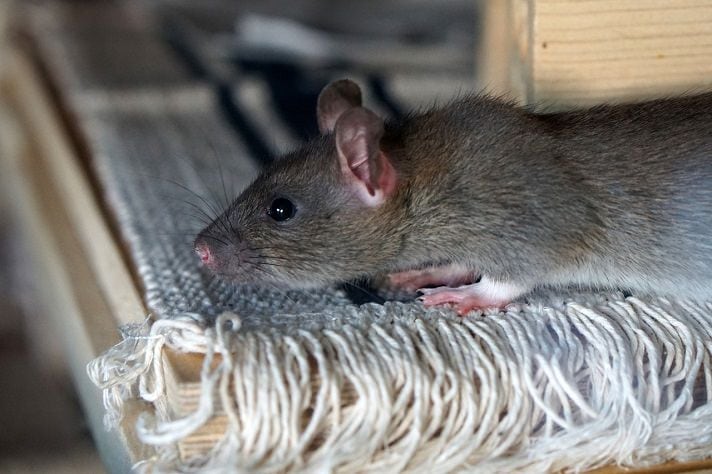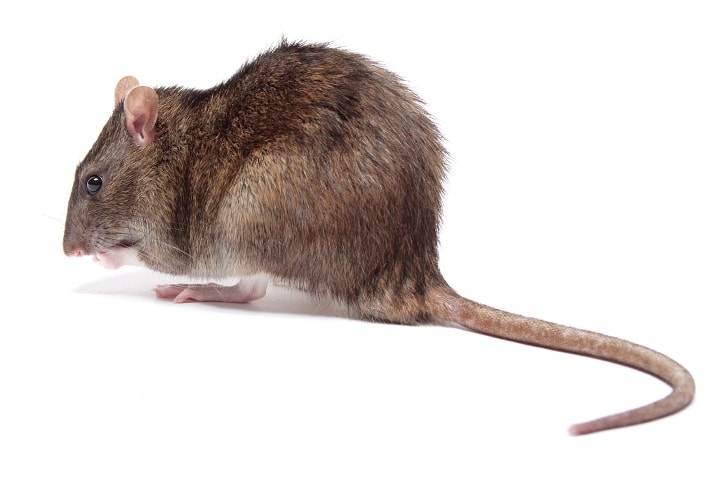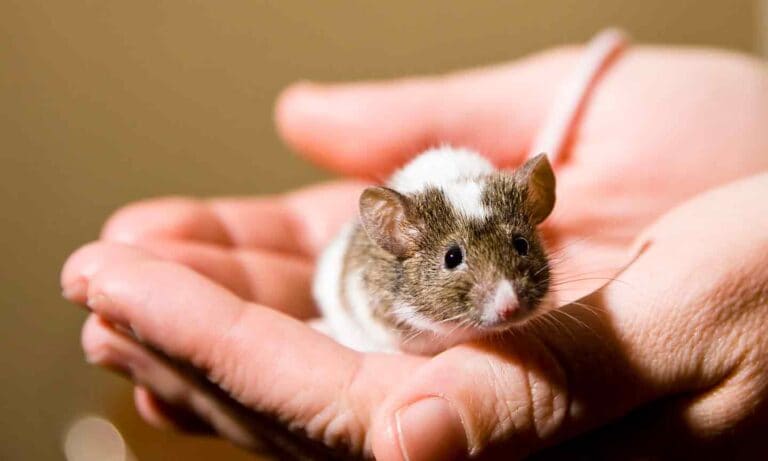Those who share their lives with a pet rat can attest to the fact that these little dynamos are intelligent, active and curious. If you are new to rats or perplexed by some of the behaviors your pet rat displays, here is a rundown of common rat behaviors and what they mean.
1. Peeps, Squeaks And Shrieks!
If your rat is making an audible ruckus, there’s a good chance he’s not happy. He might be protesting against you handling him or showing his displeasure at being removed from his cage. If you hear a long, strong squeak, your rat might have experienced some pain, like a pinch on his tail. If you hear a shriek coming from your rat’s habitat, investigate to make sure your little critter is OK.
2. Rumbling In The Night
Don’t expect a rat to be on the same sleep schedule as you. Rats are nocturnal, which means that their normal sleep cycle is awake at night and asleep during the day. So from the time you finish dinner up until you head to bed is a good time to play with your rat, and again in the morning. You won’t mind your rat sleeping all day after you take a peek at him in slumber — rats sleep in a number of amusing positions, including rolled up in a ball, hanging partway out of a tube or hammock, on their backs or in a “dog pile” formation if you have more than one.
3. Scavenger Hunting
Rats are Nature’s little scavengers — they take what they can get and then high-tail it back to their den. In a home environment, these little opportunists might sneak off with whatever is light enough for them to carry. They are especially inclined to steal items they can chew up, like those made of wood, plastic or rubber, or those made of a comfy material like paper, tissue and fabric to line their home. Rats also hoard food; so don’t be surprised to find a little edible stash hidden in your rat’s cage.
4. Boxing
Kangaroos box and so do rats! Rats in the midst of a boxing match stand on their hind legs and stand face to face and paw at each other. Rats don’t box for fun or play. They box to show who is the alpha rat. Rats have a natural social hierarchy, with a dominant rat emerging from the pack. Rats sometimes face-off by boxing or by having a “nose-off,” where two rats stand face to face but, instead of pawing at each other, they stand seemingly frozen. There are nose-off variations — the rats might stand with all paws to the ground, one paw down or both paws up. A rat trying to enforce his dominance might also lean up against other rats, which you might say is his way of throwing his weight around.
5. Nibbling On You
If your rat nibbles or licks you, he or she might be showing you affection by grooming you. Rats also have an excellent sense of smell, so your rat might nibble or lick your hand or smell you after you eat or prepare food. Your rat might take a bite of you if he finds remnants of food on your hands, like crumbs or sauce, so you might want to wash your hands after eating or cooking!
6. Burrowing And Digging
Rats in the wild live in underground burrows, which they retreat to after scavenging for food. Pet rats also show burrowing or digging behavior, especially if offered bedding materials or a pile of shredded paper to create a safe and comfortable place to sleep.
7. Wiggling Whiskers
We have GPS to get us from point A to point B; rats have their whiskers, which they use to navigate around objects as well as to help maintain balance. A rat wiggles his whiskers to literally get a better feel for his surroundings, such as to see if an object is movable or static and to gather other spatial information.
8. Tail Movements
If you suddenly scoop up your rat, he might whip his tail around in an effort to feel his way through what is happening. A rat also uses his tail for balance, which he keeps straight while running or close to the surface of whatever he might be climbing. Rats even use their tail to help prop them up while standing.
9. Eye Bulging
Yes, you did just see your rat’s eyes bulge out of their sockets! Eye bulging, also referred to as eye boggling, happens when a rat’s eyes move in and out of the eye sockets. Don’t worry; your rat hasn’t gone completely bonkers. He may, in fact, be quite relaxed and happy.
10. Teeth Grinding
Eye bulging typically occurs along with teeth grinding, also called bruxing. Rats’ teeth continuously grow, so teeth grinding helps keep them in check. A rat is more inclined to grind his teeth when he is relaxed and content, similar to when a cat purrs. The vibrations of moving his jaw back and forth as he grinds his teeth create vibrations that move the eyeball in and out of the eye socket, thus causing the eyes to bulge. A rat might also brux as a way to self-soothe when he’s afraid or in pain, so pay attention to his body language and circumstances to determine if he is content (sitting on you while you pet him, for example) or afraid (like if you vacuum near his cage).
By: Laura Doering
Share:
